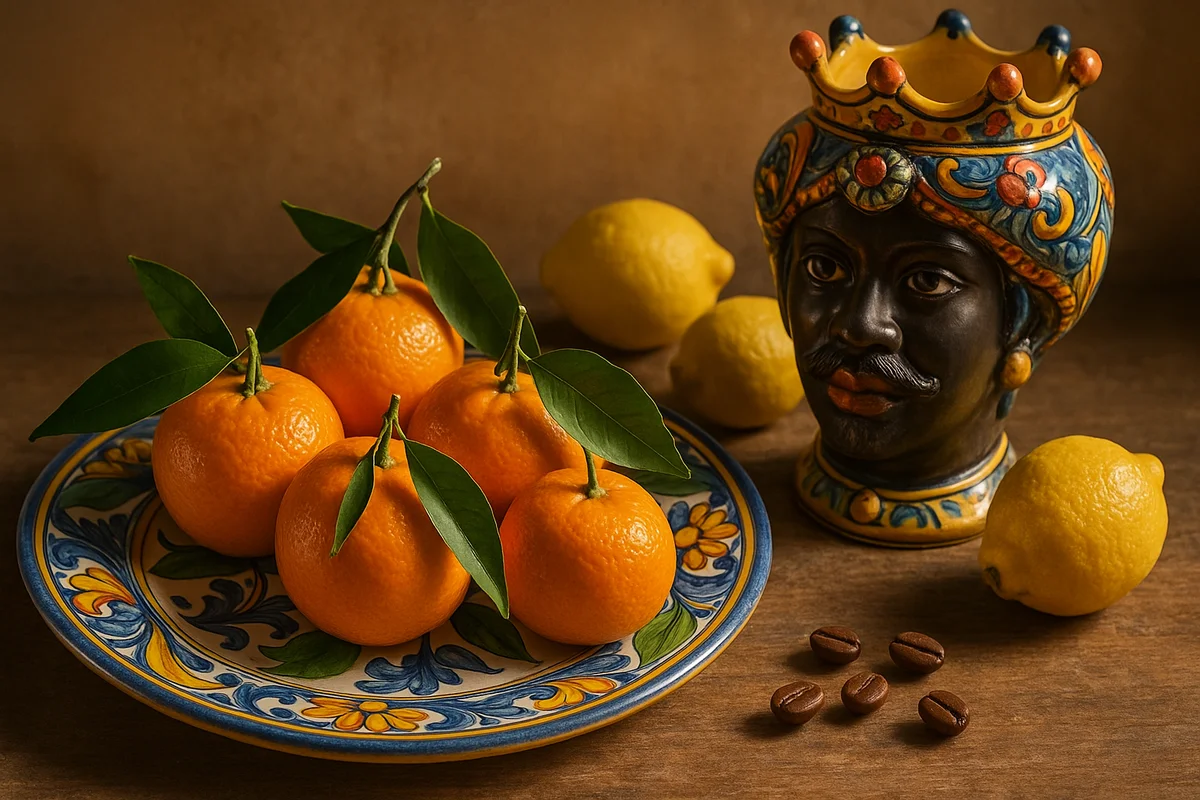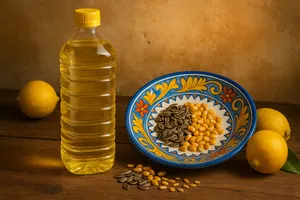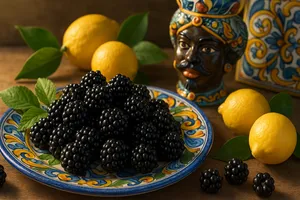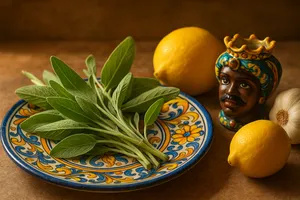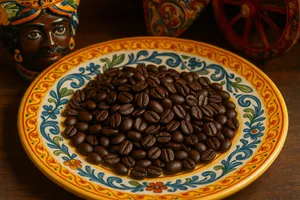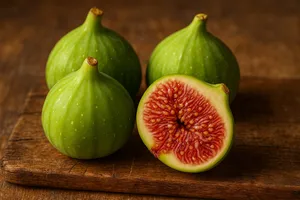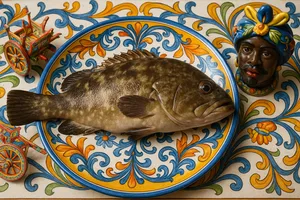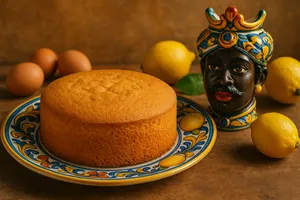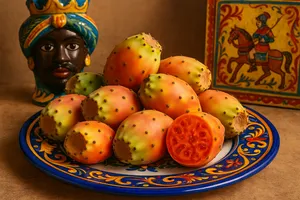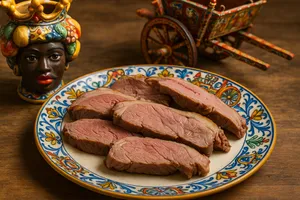Overview
Mandarins are medium-small citrus fruits with a thin, easily removable peel, a sweet flavour and an intense, distinctive fragrance. Originally from China and introduced to the Mediterranean in the nineteenth century, mandarins found ideal climatic conditions in Sicily and became an important crop on the island, particularly in the provinces of Catania, Siracusa and Palermo, where they produce exceptional fruits appreciated worldwide.
In Sicilian tradition, mandarins are the quintessential winter fruit, eagerly awaited for their sweetness that contrasts with the cold season. Their easy-to-peel skin makes them perfect for fresh consumption, as a snack or a natural dessert. The intense aroma of the peel and segments fills homes during the winter months, and mandarins feature in traditional sweet preparations, fragrant marmalades, candied peels and aromatic liqueurs. Their presence in Sicilian markets, with vibrant shades ranging from golden orange to deep red, marks the arrival of the colder season with a note of colour and cheerfulness.
Characteristics
Mandarins have a slightly flattened shape at the poles and are smaller than oranges, with a diameter of 5–8 centimetres. The peel is thin, bright orange or reddish-orange, and easy to detach from the pulp. The surface may be smooth or slightly rough depending on the variety.
The pulp is divided into 9–12 easy-to-separate segments, juicy and orange in colour. The flavour is sweet with a faintly acidic note and highly aromatic. The fragrance is intense, fresh, distinctive and immediately recognisable, with fruity, citrus notes. Some mandarins have seeds while others are seedless.
High-quality mandarins have a bright peel that clings lightly to the pulp, an intense and even colour, and a weight that feels substantial for their size (a sign of abundant juice), as well as a penetrating aroma. To the touch, they should feel firm but not hard, with intact peel free of blemishes.
Varieties
Avana Mandarin
A traditional Sicilian variety, probably the first introduced on the island. The fruits are medium-small with a thin golden-orange peel and a very fragrant aroma. The flavour is sweet and aromatic, with seeds. Ripening occurs from November to January. It is considered the quintessential mandarin, known for its characteristic fragrance.
Tardivo di Ciaculli Mandarin
A native Sicilian variety grown in the district of the same name in Palermo, now a Slow Food Presidium. The fruits are medium-large with an intense orange peel and late ripening (February–April). The flavour is extremely sweet and highly aromatic, with almost no seeds. It is considered one of the finest mandarins in the world for its balance of sweetness and acidity.
Mandarancio
A natural hybrid between mandarin and orange, larger than the traditional mandarin with a slightly thicker peel, though still easy to remove. The flavour is a more balanced sweet-tart. It is larger in size with firmer pulp. Ripening occurs from December to March.
Clementines
A hybrid between mandarin and bitter orange, seedless or with very few seeds. They have a thin bright orange peel that is very easy to remove. The flavour is sweet and juicy. These are the most commercially widespread “mandarins”, although technically they are not pure mandarins but a hybrid variety. Ripening occurs from November to February.
Chinese Mandarin (kumquat)
Small oval citrus fruits of 2–3 cm, eaten whole with the peel. They have a distinctive flavour: sweet in the peel and tart in the pulp. In Sicily they are grown mainly as ornamental plants and for particular preparations.
Cultivation in Sicily
In Sicily, mandarins are grown primarily in the coastal plains of the eastern provinces and in the Conca d’Oro around Palermo. The most suitable areas are the plain of Catania, the Siracusa area and the Ciaculli–Palermo zone for the late variety. The mild Sicilian climate, with winters that are not too harsh and warm summers, is ideal for their cultivation.
Sicilian mandarin orchards are often traditional citrus groves with century-old trees that remain productive. The trees reach 3–4 metres in height, with dense foliage and glossy green leaves. Flowering occurs in spring, producing highly fragrant white blossoms. The fruits ripen in autumn and winter depending on the variety.
Harvesting is done manually using scissors to cut the stem without damaging the peel. Mandarins must be picked at full maturity because, unlike other citrus fruits, they do not continue to ripen after harvesting. Sicilian production of mandarins and clementines is of high quality and greatly appreciated on both national and international markets.
Seasonality
In Sicily, the mandarin season runs from November to April, with peaks varying according to the variety:
- Early mandarins (Avana): November–January
- Clementines: November–February
- Mandaranci: December–March
- Tardivo di Ciaculli: February–April
The period of greatest availability and best quality is December–January, when mandarins reach the perfect balance of sweetness and acidity. The Tardivo di Ciaculli, unique in its kind, allows one to enjoy fresh mandarins well into spring, when all other citrus fruits are already out of season.
Culinary Uses
Mandarins have many uses in Sicilian cuisine.
Fresh consumption
The most traditional and cherished way to enjoy mandarins is fresh, peeled and eaten segment by segment. They are the quintessential natural dessert, a favourite snack for children and a fruit that can be taken anywhere thanks to its convenience.
Mandarin marmalade
Mandarin marmalade is highly fragrant with a delicate flavour. It is prepared with the pulp and part of the peel (the white pith must be removed as it is bitter), sugar and lemon. It is excellent for filling tarts, biscuits or simply spread on bread.
Mandarin juice
Fresh mandarin juice is a sweet, vitamin-rich drink, less acidic than orange juice. It is best consumed immediately to appreciate its fragrance. It is also used to prepare granitas, sorbets and cocktails.
Orange and mandarin salad
A traditional preparation where mandarins and oranges are peeled, sliced or sectioned, and dressed with olive oil, salt and pepper, sometimes with red onion and olives. A fresh, fragrant starter typical of the Sicilian winter.
Sweets
Mandarins enrich cakes, loaf cakes, ring cakes and biscuits. The grated zest, juice or small pieces of pulp are used. Mandarin aroma lends desserts a distinctive note, less common than orange yet equally appealing.
Candied mandarins
The peels of mandarins are candied through a lengthy process of immersion in concentrated sugar syrup. Mandarin candied peel is intensely fragrant and used in pastry-making for cassatas, cannoli and Christmas sweets.
Mandarin liqueur
Similar to limoncello, it is made by macerating mandarin peel in alcohol and then adding sugar syrup. The resulting liqueur is sweet, fragrant and orange-coloured. It is a well-loved homemade digestif.
Mandarin syrup
By cooking mandarin juice with sugar, one obtains a fragrant syrup used to prepare drinks, granitas or to moisten cakes.
Preparation
Mandarins are easily peeled by hand, detaching the peel from the pulp. For fresh consumption, they are divided into segments and eaten one by one, removing any seeds if present.
To use the juice, the fruits are squeezed with a manual or electric citrus press. To collect the zest, the outer coloured part of the peel is grated with a fine grater, avoiding the white pith underneath, which is bitter. The grated zest is used to flavour desserts, creams and preparations.
To prepare clean segments for salads or decorations, mandarins are peeled “à vif”: with a sharp knife the entire peel, including the white pith, is removed, then the segments are extracted by cutting along the membranes. This yields clean, skinless segments.
Storage
Mandarins keep at room temperature, in a cool and ventilated place, for 4–7 days. They should not be stored in plastic bags but placed in a basket or dish where air can circulate. Their fragrance is better appreciated at room temperature.
In the refrigerator, stored in the fruit drawer, they last for 2–3 weeks, though they lose some fragrance and their flavour becomes less intense. It is best to take them out of the refrigerator a few hours before eating them to fully appreciate their aroma.
Fresh juice keeps in the refrigerator for 1–2 days in an airtight container, but quickly loses vitamins and fragrance. Grated zest can be frozen in small portions to have it available throughout the year. Whole mandarins do not freeze well for fresh consumption, but the pulp in segments can be frozen for culinary uses.
Tips for purchasing
When buying mandarins, choose fruits that feel heavy for their size, an indication of abundant juice. The peel should be bright, with an intense and uniform colour, free of green patches (unripe) or brown spots (deterioration). Avoid fruits with very dry or wrinkled peel or soft areas.
To the touch they should be firm but not hard. A slight give when pressed is normal, but they should not be mushy. The fragrance should be intense and pleasant. The peel may detach slightly from the pulp, which is normal, but it should not be completely separated with large pockets of air.
Choose Sicilian mandarins where possible, especially those with a specific indication of origin (Ciaculli, Etna area, etc.). Fruits with green leaves still attached are usually fresher. If possible, choose traditional varieties such as Avana or Tardivo di Ciaculli, known for their superior fragrance and flavour.
Nutritional properties
Mandarins provide about 50–55 calories per 100 grams. They are composed of around 85% water and contain about 12 grams of carbohydrates per 100 grams, mainly simple sugars. Their protein content is low (0.8 grams) and fats are minimal.
They are very rich in vitamin C (around 30–40 mg per 100 grams), essential for the immune system and especially important during the cold season. They contain vitamin A, B-group vitamins and vitamin E. They are a good source of potassium, calcium and magnesium.
They contain fibre, especially in the thin white membranes surrounding the segments, which support intestinal regularity. They are rich in antioxidants, particularly flavonoids, with anti-inflammatory and protective properties. Limonene, present in the peel, has beneficial properties studied by scientific research.
They have digestive, refreshing and thirst-quenching properties. In Sicilian folk medicine, mandarins were considered helpful for preventing colds and winter illnesses thanks to their vitamin C content. They are well tolerated, being less acidic than oranges, and therefore suitable even for those with sensitive stomachs.
The Tardivo di Ciaculli Mandarin
The Tardivo di Ciaculli Mandarin deserves special mention. This native Sicilian variety, grown in the Ciaculli district and surrounding areas of Palermo, is now a Slow Food Presidium aimed at preserving its cultivation and quality. It has unique characteristics: late ripening (February–April), when all other mandarins have already disappeared, exceptional flavour with the perfect sweet-tart balance, an intense fragrance and very few seeds.
Traditional cultivation in small family plots, manual harvesting and direct sale by producers make the Tardivo di Ciaculli a niche, precious and sought-after product. Once tasted, it is difficult to return to ordinary mandarins. It represents an example of Sicilian citrus biodiversity and the importance of preserving local varieties of exceptional quality.
Curiosities
The name “mandarin” may derive from the Chinese officials known as “mandarins”, who wore orange-coloured garments. The fruit, originating from China, was associated with these dignitaries due to the similar colour of their clothing.
In Sicily, mandarins were considered a luxury until the mid-twentieth century. Receiving mandarins as a gift was a sign of esteem. In less affluent families, mandarins were reserved for children or the ill, due to their nutritional value and sweetness.
Mandarin blossoms, like those of other citrus fruits, are highly fragrant and were used in traditional perfumery. Orange blossom water, used in pastry-making, can also be prepared from mandarin blossoms, although it is less common.
In Sicilian tradition, gifting mandarin plants was considered a good omen. Having a mandarin tree in one’s garden was a sign of prosperity. Even today, many Sicilian homes have a mandarin tree that provides fruit for the whole family throughout winter.
During the Sicilian Christmas and New Year festivities, mandarins were (and still are) among the symbolic fruits on festive tables. They were placed in Christmas stockings together with sweets and dried fruit. The fragrance of freshly peeled mandarins is deeply associated in the Sicilian imagination with the holiday season.

